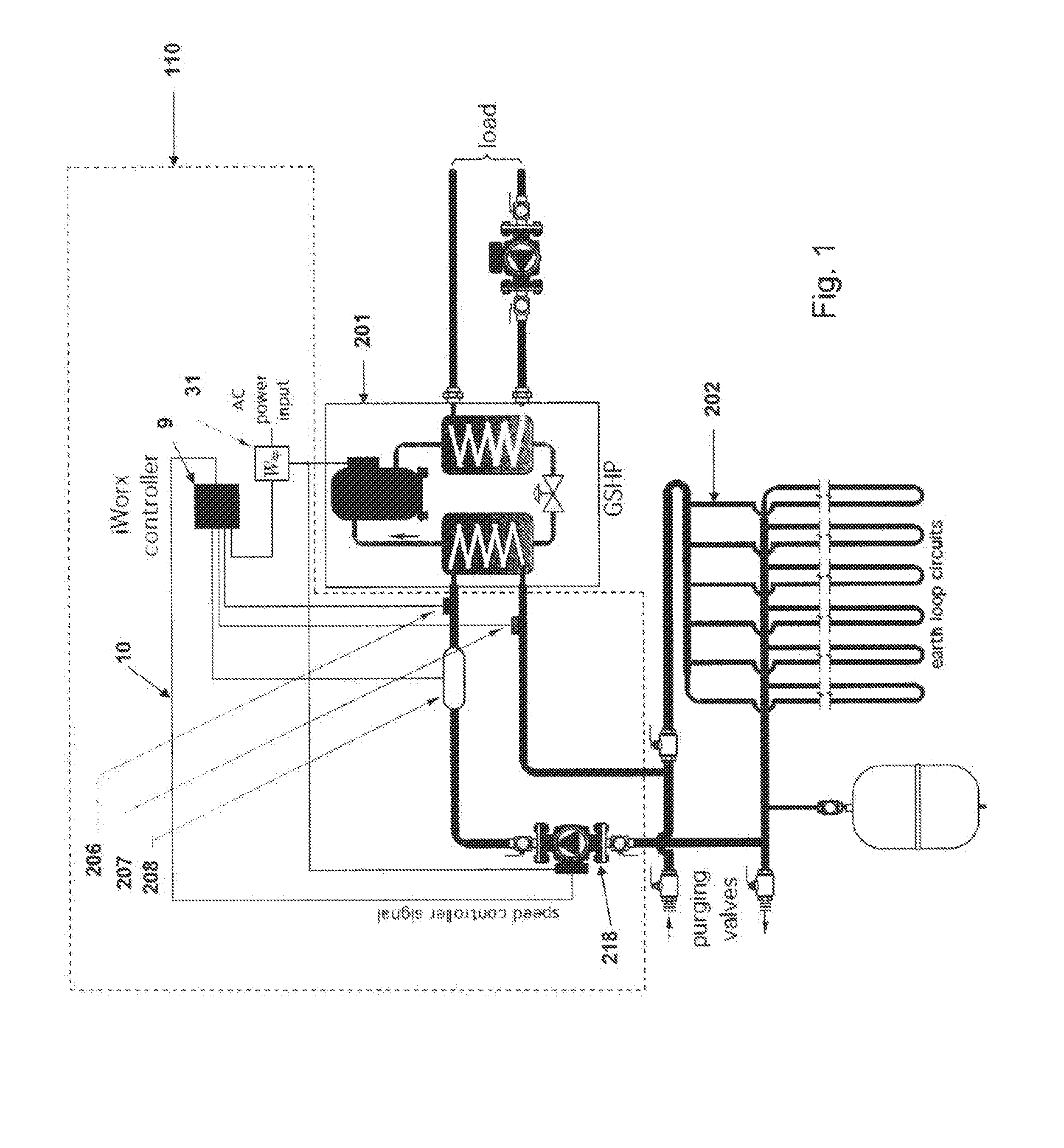Optimizing the efficiency and energy usage of a geothermal multiple heat pump system
a geothermal multiple heat pump and efficiency optimization technology, applied in heat pumps, lighting and heating apparatus, heating types, etc., can solve the problems of inefficient operation of geothermal loop, low flow rate through plastic piping usually used, and multiple heat pump systems providing no means of reducing electrical demand, so as to optimize the efficiency of the overall system and optimize the coefficient of performance
- Summary
- Abstract
- Description
- Claims
- Application Information
AI Technical Summary
Benefits of technology
Problems solved by technology
Method used
Image
Examples
Embodiment Construction
[0019]The operation of systems of this invention, in accordance with the general depictions of FIGS. 1 and 2, is preferably carried out using a digital controller 9, programmed in accordance with the algorithms represented by the flow charts of FIGS. 6 and 7, respectively. The program comprises a series of mathematical equations that are used to calculate the various parameters of the system, based upon data received by the controller 9 from the several sensors, and pre-entered information, such as the known properties of the circulating fluid, e.g., its specific heat and density. The data received provide the bases for controlling the earth loop circulator 8, by optimizing the flow through the earth loop 101, which tends to enhance the coefficient of performance (COP) of the overall system, and to maintain the instantaneous rate of heat transfer (Qearthloop) on the earth, or Source, loop side 101 of the hydraulic separator 1, at a value not less than the heat transfer (Qoutput) for...
PUM
 Login to View More
Login to View More Abstract
Description
Claims
Application Information
 Login to View More
Login to View More - R&D
- Intellectual Property
- Life Sciences
- Materials
- Tech Scout
- Unparalleled Data Quality
- Higher Quality Content
- 60% Fewer Hallucinations
Browse by: Latest US Patents, China's latest patents, Technical Efficacy Thesaurus, Application Domain, Technology Topic, Popular Technical Reports.
© 2025 PatSnap. All rights reserved.Legal|Privacy policy|Modern Slavery Act Transparency Statement|Sitemap|About US| Contact US: help@patsnap.com



